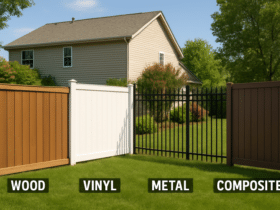Key Takeaways
- Regular inspections help identify and address issues early, before they become costly.
- Proper cleaning prevents mold and mildew buildup, protecting both health and the integrity of wood surfaces.
- Sealing and staining shield your siding from environmental damage, including moisture and UV rays.
- Prompt repairs stop minor issues from escalating into significant structural problems.
- Professional assistance ensures the most durable results, especially for complex repairs.
Table of Contents
- Introduction
- Regular Inspections
- Proper Cleaning
- Sealing and Staining
- Prompt Repairs
- Professional Assistance
Maintaining log siding isn’t just about appearance; it’s also a critical step in safeguarding your home from the elements, preserving your investment, and ensuring decades of beauty and functionality. Log siding evokes charm and rustic character, but beneath its good looks lies a need for diligent care. By putting the right attention into your log siding, you can avoid costly replacements, stop minor damage before it spreads, and keep your home’s exterior looking spectacular for many years. If you are uncertain about your own maintenance skills or want a professional’s perspective, consulting log siding repair experts can provide handy guidance and ensure you take effective, time-tested steps that guarantee long-lasting results.
This definitive guide shares the essential strategies that every homeowner should know to stretch the lifespan of their log siding. The advice here is drawn from industry expertise and years of practical experience, balancing technical know-how with hands-on tips. Whether you’re a seasoned owner of a log home or have just installed your first section of log siding, these recommendations will help protect your investment, enhance your home’s curb appeal, and ensure your siding stands strong against sun, rain, pests, and time itself. Following these steps will make all the difference between a quick fix and a solution that lasts.
Regular Inspections
Consistent inspections stand as your first line of defense when it comes to prolonging the life of your log siding. Set a schedule to walk around your home at least twice a year—once in the spring, after winter’s ice and snow have melted, and once in the fall, before cold, wet conditions set in. During these walkarounds, carefully check for obvious warning signs such as splits or cracks in the wood, warping boards, areas of discoloration, rot, or any evidence of wood-boring insects. Use a flashlight to see shaded or hidden areas under eaves or decks. Early detection and intervention will save time, money, and effort later, and can keep minor issues from evolving into full-on replacements. Pay particular attention to spots near gutters, roof joints, and windows, where water tends to gather or seep behind the siding and create problems unnoticed until they become severe.
What to Look For
- Cracks or checks: Even minor surface cracks can let rainwater and snowmelt seep in, increasing the likelihood of hidden rot.
- Rot and soft spots: Press gently with your fingers or a blunt tool on questionable places. If the wood feels soft, spongy, or starts to crumble, rot is present and needs immediate attention.
- Signs of pests: Watch for fine sawdust piles, small round exit holes, or “frass” (insect debris), as these indicate ongoing or previous insect activity. Early action helps prevent larger infestations that threaten your home’s structure.
Proper Cleaning
Clean log siding doesn’t just boost curb appeal—it plays an essential role in long-term wood preservation. Dirt, pollen, algae, mold, and mildew can all compromise the strength and appearance of your siding if left unchecked. Over time, these contaminants break down protective finishes and trap moisture, leading to decay and insect attraction. To clean log siding safely, use a soft-bristle brush with a diluted gentle detergent solution to scrub away grime. After loosening the debris, rinse thoroughly with a garden hose. Avoid high-pressure washing equipment; while it might seem efficient, powerful jets force water deep into seams and the wood’s fibers, resulting in swelling, hidden water pockets, and eventual rot or surface damage that’s not immediately visible.
Cleaning Schedule and Tips
- Plan for a thorough cleaning at least once a year, preferably in the spring, to wash away winter buildup. Homes surrounded by trees or exposed to lots of dust or pollen may need an additional cleaning in late summer or fall.
- Spot clean any patches of algae or mold as soon as they appear. Use a natural solution of water, white vinegar, and a small amount of dish soap—it is environmentally safe and effective for targeted cleaning. For stubborn algae, a dedicated wood-safe cleaner may be necessary.
- Always rinse well after cleaning to ensure no cleaner residue is left behind, as this can attract more dirt or pests. Let the wood dry thoroughly before inspecting for needed repairs or before applying fresh stain or sealant.
By maintaining a regular cleaning schedule, you dramatically reduce the likelihood of decay and unwanted fungal growth, helping your home maintain its inviting, well-kept appearance year-round.
Sealing and Staining
Even the highest-quality log siding is susceptible to moisture infiltration and sun damage over time. Applying a proper sealant or stain forms a defensive shield against weather, keeping water out and blocking harmful ultraviolet rays—both of which degrade the wood’s natural fibers, color, and structural soundness. Choose stains and sealants specifically designed for log or exterior wood use; their advanced formulas offer better penetration and lasting performance compared to generic options, which may break down prematurely or provide insufficient protection in harsh climates.
How Often to Reapply
- Plan to reseal or restain every three to five years, depending on your local climate, sun exposure, and specific product recommendations. Inspect high-exposure south- or west-facing walls yearly—these areas fade or degrade faster and may need touch-ups sooner than more sheltered sections.
- Follow all product-specific instructions for preparation and application. Clean and allow the siding to dry completely, sand away loose or peeling finish, and repair any damage before starting. Applying stain or sealant to dirty or damp wood can trap moisture and encourage rot.
- Use quality brushes or rollers designed for exterior wood. Ensure you work stain into all cracks, seams, and exposed end grains—the most vulnerable entry points for water.
Sticking with this schedule and technique will make sure your log siding remains healthy, eye-catching, and weather-resistant for many seasons to come.
Prompt Repairs
Small issues like a cracked log, a spot of loose caulking, or an isolated area of rot are signals to act quickly. Delaying repairs only provides more opportunity for moisture intrusion and pest infestation, which can significantly worsen what was once a minor surface flaw. Always use compatible wood fillers or caulks designed for log homes, and select replacement boards that match or complement the original profile and color to maintain both strength and appearance. Thorough repairs not only extend your siding’s lifespan but also retain your home’s attractive, seamless finish.
Strategies for Quick Fixes
- Replace or patch damaged boards as soon as possible, matching the original stain for a uniform look. Temporary patches should be replaced with permanent repairs when conditions allow.
- Seal all joints, corners, and exposed cut ends immediately to block moisture entry. Unsealed ends are particularly prone to absorbing rainwater and humidity from the air.
- Use only exterior-grade sealants, caulks, and fillers for repairs. Materials not rated for outdoor use will quickly fail, forcing further repairs.
Addressing even minor problems as soon as they appear preserves not only the integrity of your siding but also the value and enjoyment of your entire home.
Professional Assistance
Some issues—particularly those involving extensive rot, persistent pest problems, or structural instability—are best handled by experts. Experienced contractors bring specialized tools and know-how for diagnosing hard-to-spot issues, recommending the most durable repair or replacement techniques, and executing work that stands up to the elements. Log siding repair specialists back their work with industry knowledge and often warranties, giving you extra peace of mind that your investment is protected well into the future. Especially if your home is historic, unusually large, or if damage is widespread, a professional evaluation is wise.
Whether you’re doing basic upkeep or facing an unexpected challenge, expert insight can make all the difference in keeping your siding strong and beautiful By integrating these practical, proven tips into your seasonal maintenance routine, you are not only preserving your home’s beauty but also deflecting the worst that weather, pests, and time can throw your way. Attentive log siding care pays off, ensuring that your home remains as inviting, sturdy, and eye-catching for future generations as it is today.










